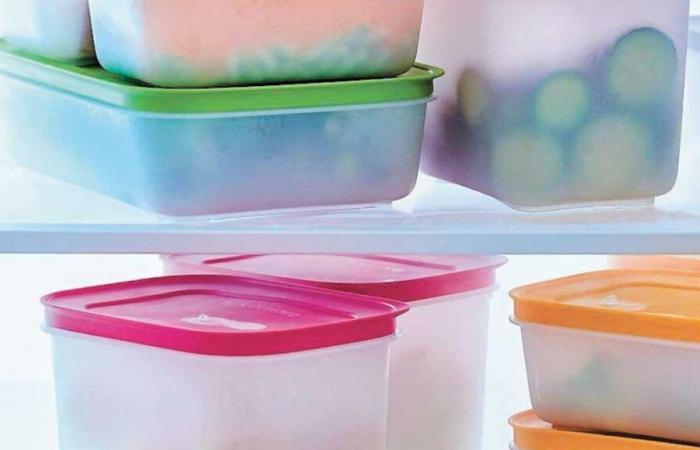Is this the end of Tupperware parties? The American group, manufacturer of the legendary food containers, launched bankruptcy proceedings on Tuesday after years of difficulties, against a backdrop of consumer disenchantment.
• Also read: How did Tupperware get to the brink of bankruptcy?
• Also read: Possible Tupperware bankruptcy: sellers on alert
“For the past several years, the company’s financial position has been severely impacted by a difficult macroeconomic environment,” said Laurie Ann Goldman, CEO of the company, which makes plastic containers and other kitchen gadgets and sells them directly to consumers, in a statement Tuesday.
In this context, filing for bankruptcy protection was “the best way out,” the official explains.
The announcement had been in the pipeline for several weeks. In mid-August, the Orlando, Florida, group explained that it continued to “face significant liquidity problems” and had “doubts about its ability to continue its activity.”
In documents filed with the U.S. Bankruptcy Court in Delaware, Tupperware estimates its assets (estate) at between $500 million and $1 billion, and its liabilities (capital and debts) at between $1 billion and $10 billion. It lists between 50,000 and 100,000 creditors.
Tupperware had to restructure its financial commitments for the first time in 2020. By mid-2023, it had managed to restructure more than half a billion dollars of its debt.
Tupperware shares were suspended from trading on the New York Stock Exchange on Tuesday. The stock closed Monday at $0.50, down from $2.55 in December last year.
Plastic, not “fantastic”
The group, an emblematic home sales company, has been weakened by the emergence of online commerce, the rise of meal delivery and, in its wake, single-use plastic, which have called its model into question. It has also been a victim of consumers’ desire to access more environmental solutions.
“The party has been over for some time for Tupperware,” said Susannah Streeter, an analyst at Hargreaves Lansdown. “Changes in shopper behaviour have made its containers look out of fashion as consumers begin to wean themselves off their reliance on plastic and find more environmentally friendly ways to store food.”
The company has tried to adapt to changing consumer habits by expanding its online sales and entering into distribution agreements with chain stores, but has been unable to halt its slide.
Launched in 1946, Tupperware had become a social phenomenon, entering millions of homes around the world, thanks to the efficiency of its network of representatives.
Originally launched in stores, its plastic containers with airtight lids to preserve food longer did not sell well. The company then came up with the idea of ”Tupperware parties,” demonstrations held in the home of a sales representative for a group of potential buyers. In recent years, Tupperware has multiplied special editions and colorful collections, seeking new customers.
In 2017, the company founded by American inventor Earl Tupper still had more than three million representatives worldwide. It had enjoyed a boom period during the Covid-19 pandemic, before seeing its sales erode: the latest annual accounts published by the group, those for 2022, reported a turnover of 1.3 billion dollars, 42% less than five years earlier.
“There is still a chance of finding a buyer for the company, but with plastic being far from fantastic among environmentally conscious consumers, revitalising the brand will be an uphill battle,” says Susannah Streeter.





